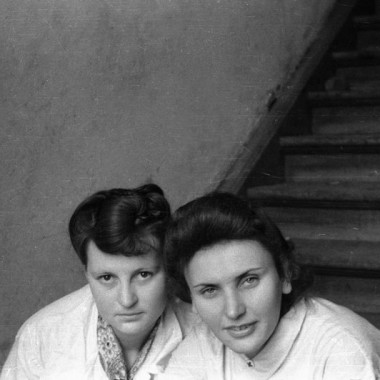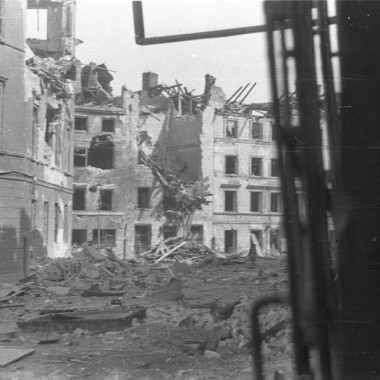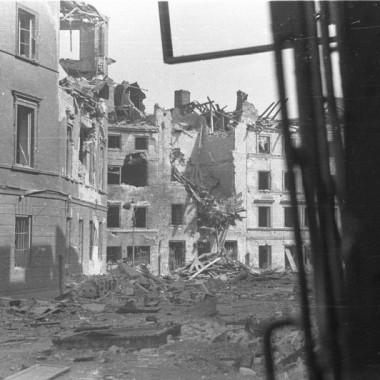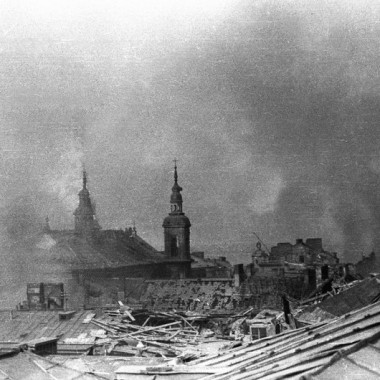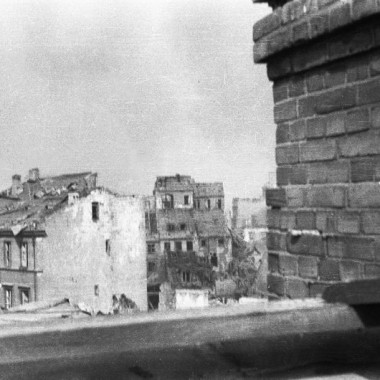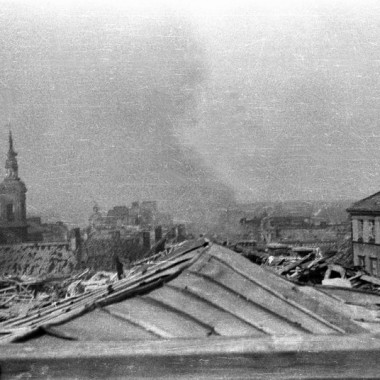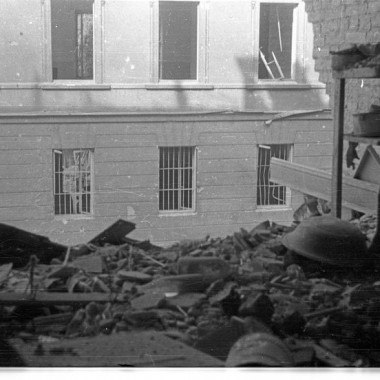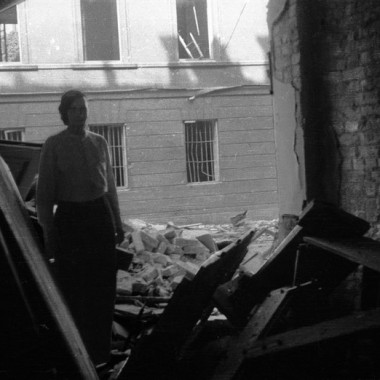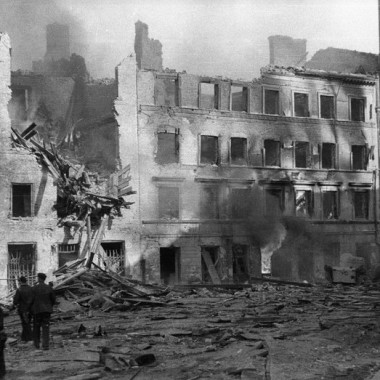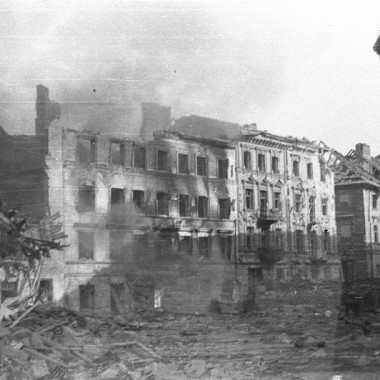Lt. Wiesław Chrzanowski "Wiesław" was born on 4 December 1920 in Sosnowiec. He graduated from Warsaw's Joachim Lelewel Middle School and the Reserve Engineer Officer Cadet Training School in Modlin, which he finished in the rank of 2nd Lieutenant, Sapper. In September 1939, he fought in the defence of the Modlin Fortress. He joined the National Military Organisation (NOW) in 1940, and later – beginning in 1943 – he became active in the Home Army in the "Aniela" Company of the NOW-AK "Antoni" Battalion. He conducted training courses for the underground Infantry Reserve Officer Cadet Training School. During the occupation, he studied at the two-year State Technical College, i.e. the occupation equivalent of the Warsaw University of Technology, completing the pre-war Polytechnic curriculum at underground classes at the same time. During the Warsaw Rising, he served as the commander of 2 Platoon, "Anna" Company of the "Gustaw" Battalion - first in the Old Town, and later, after evacuating through the sewers, in City Centre North. After the fall of the Rising, he was held in POW camps in Fallingbostel Stalag XI B, Bergen-Belsen Oflag XI B/Z, Grossborn Oflag II D, Sandbostel Stalag X B and Lübeck Oflag X C. He returned to Poland in November 1947 after graduating from the Munich Technical University (TUM). He worked for Silesian steel mills in Chorzów and Ursus Mechanical Works in Warsaw, and lectured at the Warsaw University of Technology. Wiesław Chrzanowski lived in Warsaw and died on Easter Sunday 24 April 2011.
During the Warsaw Rising, Wiesław Chrzanowski took 145 photographs in the Old Town and City Centre North, and after the Rising – in POW camps. He photographed with 35-mm Kodak Retina and Kine Exakta cameras on such negatives as, among others, Agfa Ultrarapid, Agfa Isopan F, Agfa Isopan ISS and Mimosa. He hid some of his undeveloped films in the basement of the house at 3 Wilcza Street, and smuggled the others through successive POW camps. While in captivity, in Bergen-Belsen and Lübeck, he took more than 90 photographs with his Kine Exakta camera. His photographs show mainly non-combat scenes like insurgents at rest, meals, and a staged insurgent attack. However, Chrzanowski's photos include images of some tragic events of that time: the explosion of a German explosive charge carrier in Kilińskiego Street, evacuation through the streets of the destroyed city, and portraits of his colleagues who just lost their loved ones. The most interesting and widely recognised photos include images of the ditch across Jerozolimskie Avenue that linked City Centre North with City Centre South, and Insurgents collecting barley from the storehouses of Haberbusch & Schiele Brewery to prepare a soup made from grain ground in coffee grinders.






